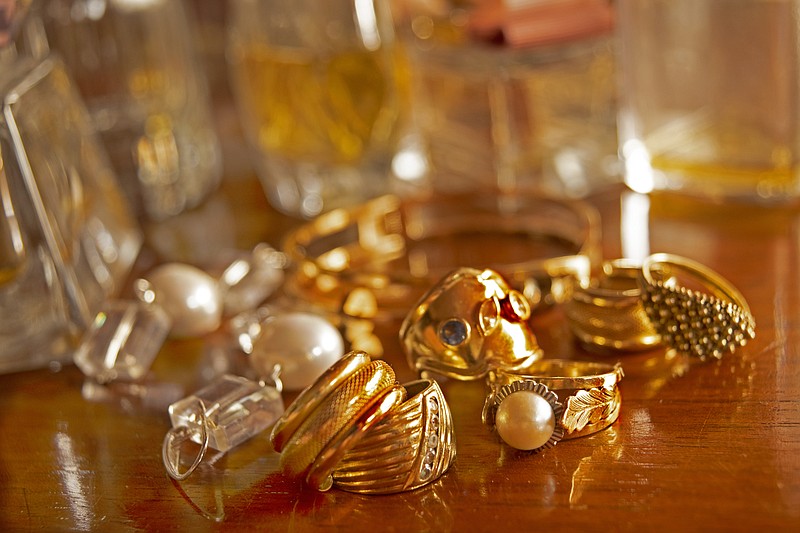When Christine Gerardi arrives at a client's home, the shoeboxes start coming out of the closets. The boxes contain piles of old jewelry, most worthless, some valuable, a bit in between, and always a bewildered owner who doesn't know what to do with it all.
"No other item in a home is more contentious than family jewelry," says Gerardi, a concierge jeweler (meaning she works with clients in the comfort of their homes), based in central Florida.
The family jewels carry the stories of love, commitment, milestones and celebrations. And, because jewelry symbolizes love and money, it is the stuff of legend, lore and lawsuits.
I met Gerardi through a friend, who'd been slogging through her mother's belongings. "Christine took the time to help me sort and separate," said Teri Siciliano, of Altamonte Springs, Fla. "The whole process was so much easier and less terrifying than taking everything to a 'we buy gold' place."
"People looking to sell jewelry are often at a low point," Gerardi said. "They're dealing with a death or divorce or need money." Though I have been in each of those tough spots, blessedly, I was not in one last week when I invited Gerardi over to walk me through the process of sorting through my family jewels.
What I wanted to figure out, while I was still of questionably clear mind, was what to keep, sell or toss, and whether I had anything worth anything.
I spread my mishmash of jewelry on the table between us. I steadied myself as the flashbacks hit. I have jewelry from my mom, my grandmother, and very long-ago boyfriends. I found tiny gold earrings I wore in high school, my class ring, a sorority pin. Why? Ninety percent of this stuff I would never wear. But somehow, like every other woman reading this I bet, I have amassed an entire drawer full of old jewelry that I don't know what to do with.
What I do know is that I want to downsize it in a thoughtful way and not leave a mess for my kids. I do not want to cling to meaningless, valueless pieces I'll never wear, but I do want to cash in anything that does have value, just not to me. And I want to whittle the collection down to what has meaning, what I like, and what I will wear.
That's where Gerardi can help. Here's what she recommends:
Have the conversations. Before you liquidate any family jewelry, ask family members what they want either now or later. Do not sell anything of value that is part of a will or a court case.
Get real about value. Misunderstandings happen when people don't know the difference between appraised value and cash value. An appraisal gives you a price, generally high, for the cost to replace the item if it were lost or stolen. This is useful for insurance purposes. An evaluation is what a buyer will pay you in cash that day. They may buy the piece to melt down or resell. Either way, their offer will be much lower than the appraised value. Make three piles. Gerardi divides jewelry into three groups: costume, sterling and precious metal (gold or platinum). Costume jewelry has practically no value. Keep what you like and toss or donate the rest. The same goes for sterling, although you may find a market for it online. The gold pile is what interests buyers.
Go for the gold. In the precious metal pile, pull out anything you wear and enjoy, that has sentimental value, or that is from a luxury brand designer, such as Tiffany, Van Cleef & Arpels, or Cartier. (There are many.) Designer pieces will usually sell for more than their melt value. The rest can be converted to quick cash.
Melt or sell? Before you sell for meltdown value, consider selling fine jewelry in good condition or designer pieces yourself on eBay or on a consignment site like RealReal. If you think a piece from a lesser brand might have market value, see if it has a name or stamp. Search it online to see what it's worth. Some companies will list items for you and handle the transaction and shipping for a fee. Otherwise, consider selling to a gold buyer.
Get three offers. The value of gold depends on the day, and sometimes the hour. While Gerardi and I were meeting, gold prices went up $6 an ounce. The price also depends on the buyer. Gerardi suggests getting three offers: ask at a jewelry store, a pawn shop, and a place that buys gold what they would pay in cash. Know how many grams you're selling and compare offers with online gold-to-cash calculators.
Chronicle what matters. Keep a fine jewelry file with receipts, records and photos. If you have a valuable stone, including any diamond over one carat, have it GIA certified (Gemological Institute of America).
Redesign it. I showed Gerardi a large cocktail ring that was my mom's. The gold ring had a swirl of half a dozen dark (not too pretty) sapphires curved around a row of five diamonds. It wasn't my style. I had the diamonds reset into a plain white gold band, which I wear daily. "What you did was perfect," Gerardi said. "You want to preserve the history, not necessarily the ring. Holding onto jewelry in a box serves no one."
Syndicated columnist Marni Jameson is the author of three home and lifestyle books, including "Downsizing the Family Home – What to Save, What to Let Go" (Sterling Publishing).
